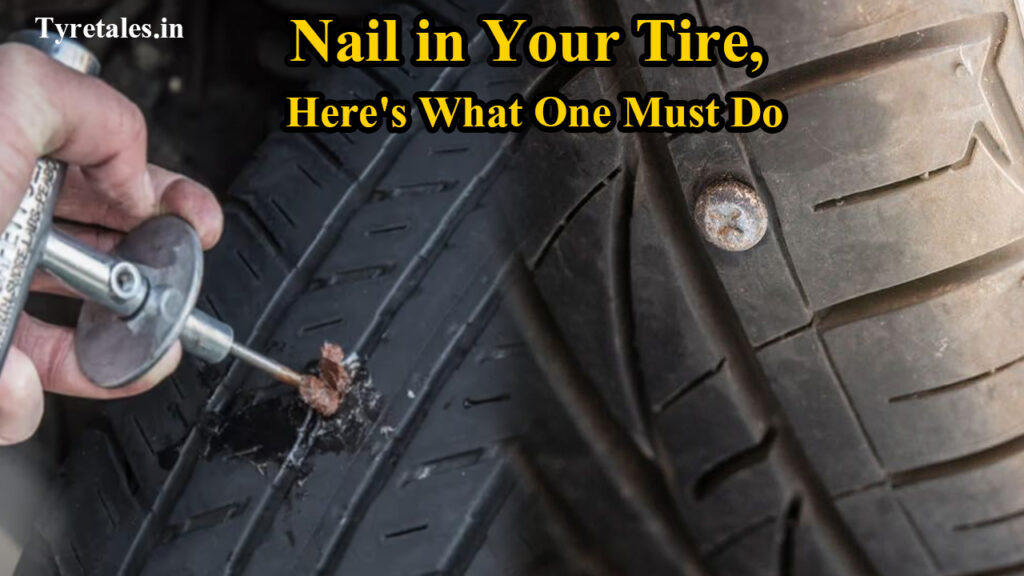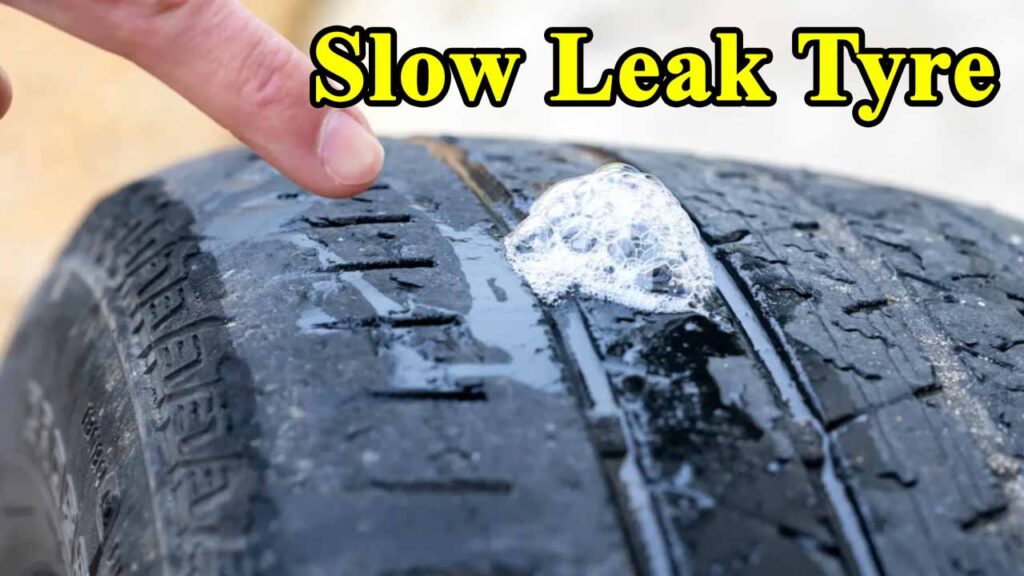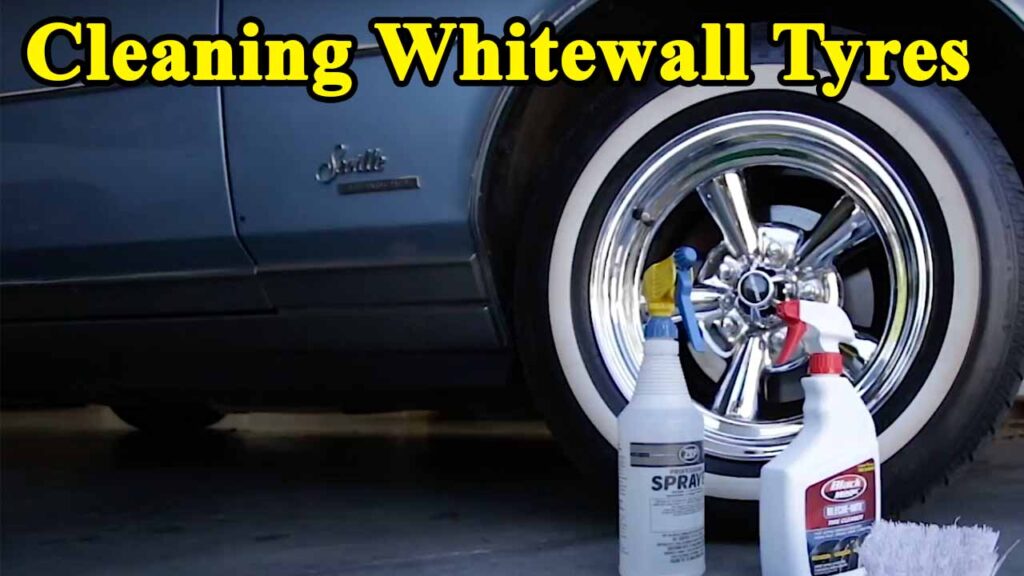It is a common sight that can instantly deflate one’s day: a glint of metal in a tire. A nail. Yet, surprisingly, the tire often appears perfectly fine, not flat at all. This unsettling discovery leaves many drivers scratching their heads, wondering if they can simply ignore it. This report aims to demystify the “nail in tire, but not flat” phenomenon, explain why it occurs, detail the immediate steps individuals should take, highlight the hidden dangers of overlooking it, and guide through the repair or replacement process, all while emphasizing safety and proactive tire care.
The Mystery Unraveled: Why a Tire Isn’t Flat (Yet)
Tires are far from simple balloons; they are complex, multi-layered marvels of engineering designed for incredible strength and resilience. A typical tire consists of a robust rubber tread, an inner liner, and multiple internal belts made of materials like steel, nylon, Kevlar, and polyester, arranged in various configurations.1 When a sharp object like a nail penetrates the tire, these dense, interwoven layers, combined with the tire’s inherent flexibility and the constant internal air pressure, often create a surprisingly tight seal around the object.2 The nail itself acts as a temporary plug, effectively blocking the immediate escape of air and preventing rapid deflation.3
Even with the nail acting as a temporary seal, air can still slowly seep out. This gradual loss of pressure is known as a “slow leak”.4 The rate of leakage is proportional to the pressure inside 2, meaning it might be imperceptible at first but can accelerate as the internal pressure drops. A slow leak can take days or even weeks to flatten a tire, depending on its size and the exact nature of the puncture.6
Toyota Glanza Prestige Edition Tyres: Best Brands, Sizes & Price in India
Beyond traditional construction, some modern tires incorporate “self-sealing” technology. These innovative tires feature an internal layer of a sticky, rubber-like sealant, often a polymer gel or compound, that automatically flows into and seals punctures up to 5-6mm in diameter specifically in the tread area.7 This technology is designed to prevent immediate deflation and allow continued travel safely to a repair shop without noticeable loss of pressure.8 Leading brands like Continental (ContiSeal), Goodyear (DuraSeal), Michelin (SelfSeal), Pirelli (Seal Inside), and Hankook (Sealguard) offer this feature.9 However, it is crucial to understand that this is a temporary solution, not a permanent repair, and it typically does not work for sidewall punctures.8
The tire’s complex, multi-layered construction plays a critical role in how it handles punctures. When a sharp object penetrates, these dense, interwoven layers resist a clean, wide tear. Instead, they compress around the object, creating a tight seal. The internal air pressure then pushes outwards, further compressing the tire material against the nail, enhancing this temporary seal. This inherent property, stemming from the tire’s engineered design, effectively creates a delay in catastrophic air loss. While this delay buys time and prevents immediate stranding, it can also create a false sense of security. The very mechanism that prevents the immediate flat can lead a driver to believe the problem is not urgent, which explains why the advice to avoid removing the nail 3 is so critical.
Immediate Action: First Steps After Spotting a Nail
The first and most important rule upon discovering a nail is to remain calm. Crucially, individuals should resist the urge to remove the nail.3 The nail is currently acting as a temporary seal, and pulling it out will almost certainly cause rapid air loss, potentially leaving one stranded or creating a more dangerous situation.
Using a reliable tire pressure gauge, one should check the current pressure.4 This reading should be compared to the vehicle’s recommended PSI, typically found on a sticker inside the driver’s side door jamb or in the owner’s manual.11 If the vehicle has a Tire Pressure Monitoring System (TPMS), keeping a close eye on the warning light is advisable.4 While helpful, it is important to remember that TPMS typically only alerts when a tire is
significantly underinflated 11, meaning a slow leak could be occurring long before the light illuminates. Regular manual checks remain the most effective method for early detection.
A careful visual inspection of the area around the nail is essential. The most critical factor determining repairability is the puncture’s location.4 Punctures in the central tread area are often repairable, but those in the sidewall or shoulder (the flexible area between the tread and the wheel rim) are almost never safely repairable and typically necessitate tire replacement.4 The size of the puncture also matters; generally, punctures under 1/4 inch (6mm) in diameter are considered repairable.4
Determining drivability depends on the tire’s condition. If the tire is holding air well and the pressure drop is minimal, it may be possible to drive a short distance (under 20 miles) to a repair shop or home.3 Driving cautiously, maintaining moderate speed, and avoiding sudden movements are paramount.10 However, if the tire is losing air rapidly, appears visibly deflated, or if unusual driving sensations are noted—such as the car pulling to one side, unusual vibration, or rhythmic thumping sounds 6—it is imperative to pull over immediately in a safe location.10 Continuing to drive in such conditions is unsafe.10 In these instances, the best options are to use a spare tire or call for roadside assistance.10
A common scenario observed by professionals involves a subtle pull to one side of the vehicle, even before the TPMS light activates. A quick visual check often reveals a nail. Acting promptly, by driving directly to a repair facility at a reduced speed and avoiding sharp turns, can often lead to a successful professional patch, saving the cost of a new tire. This highlights the importance of recognizing subtle cues and acting quickly, even when the damage is not immediately obvious.
The “not flat” state, or a slow leak, creates a dangerous illusion of safety. Individuals might delay action, assuming it is a minor issue. However, even a slow leak means the tire is operating below its optimal pressure, leading to increased tire flexing and the generation of excessive heat.10 This internal heat and stress cause the tire’s internal components, such as belts and the inner liner, to degrade and weaken over time 1, even if the external appearance seems fine. The TPMS, while a valuable safety feature, can reinforce this illusion by only alerting when the pressure drop is substantial, by which point significant, often irreversible, internal damage might have already occurred. Therefore, any foreign object in a tire, regardless of immediate air loss, compromises the tire’s integrity. The “not flat” state is merely a temporary grace period, not an indication of safety, necessitating immediate professional assessment.
The Hidden Dangers: Why Ignoring a Nail is a Risky Bet
Even if a tire is currently holding air, a nail has fundamentally compromised its structural integrity. The constant flexing and rotation of the tire during driving can cause the nail to shift, work loose, or further tear the internal layers, leading to rapid air loss or a sudden, catastrophic blowout, especially at highway speeds.10 A blowout can result in a complete loss of vehicle control, significantly increasing the risk of serious accidents.10 Furthermore, driving on an underinflated tire, even from a slow leak, generates excessive heat due to increased friction and abnormal flexing. This heat can rapidly degrade the tire’s internal components, leading to tread separation or a blowout.10
A damaged tire, even if not fully flat, directly affects a vehicle’s handling, braking, and overall stability.10 Drivers might notice subtle but dangerous changes, such as the car pulling to one side, unusual vibrations, rhythmic thumping sounds, or sluggish performance.6 These changes reduce a vehicle’s responsiveness and the ability to react safely in an emergency situation.
What might have been a simple, inexpensive patch repair if addressed promptly can quickly escalate into the need for a full tire replacement if ignored.10 The nail can cause further internal damage to the tire’s structure, or driving on a low tire can damage the sidewall, bead, or even the wheel rim, making the tire irreparable.
A Comprehensive Guide to Mahindra XUV 3XO REVX Tyre Prices and Performance in India
Even if a tire is eventually repaired after being driven on with a nail, its overall lifespan and performance may be significantly compromised due to the prolonged stress it endured. Neglected slow leaks can also lead to uneven tire wear 5 and reduced fuel efficiency 5, costing more in the long run.
The dangers of ignoring a nail are not isolated incidents; they form a cascading progression of consequences. The initial small puncture leads to a slow leak. This slow leak causes underinflation, which in turn leads to excessive tire flexing and heat generation.13 This heat and flexing then degrade the tire’s internal structure 1, even if not immediately visible. This structural degradation compromises the vehicle’s handling and braking 10, significantly increasing the risk of a sudden, catastrophic blowout.10 Simultaneously, the nail can shift and cause more extensive, irreparable damage 10, leading to a full tire replacement instead of a simple repair. This progression highlights that waiting to address a nail in a tire is not a passive act; it actively contributes to worsening the problem and escalating the risk. The immediate cost of repair pales in comparison to the potential cost of a major accident or premature tire replacement.
Repair or Replace? Making the Right Decision
The most crucial step after discovering a nail is to have a qualified tire technician inspect the tire.4 Unlike DIY methods, a professional will dismount the tire from the rim to thoroughly inspect the inner liner for hidden damage that is not visible from the outside.14 This internal inspection is absolutely vital for ensuring the tire’s long-term safety and integrity.
Not all punctures are repairable. Industry standards, such as those from the U.S. Tire Manufacturers Association (USTMA) and AAA, are very specific and designed for maximum safety.14
| Condition | Repairable (Yes/No) | Explanation & Supporting Material |
| Puncture Location | ||
| Tread Area Only | Yes | Punctures in the central tread are often fixable.4 |
| Sidewall or Shoulder | No | These areas are under high stress and constant flexing, making repairs unsafe and prone to failure.1 |
| Puncture Size | ||
| Less than 1/4 inch (6mm) diameter | Yes | Small punctures are generally within repairable limits.4 |
| Greater than 1/4 inch (6mm) diameter | No | Larger punctures compromise tire structure too much for a safe repair.4 |
| Number of Punctures | ||
| Single Puncture | Yes | A single, isolated puncture is ideal for repair.4 |
| Multiple, close together / Overlapping | No | Clusters of holes or overlapping repairs severely weaken the tire’s integrity.4 |
| Previous Repairs | ||
| No previous repairs in the same spot | Yes | Repairs cannot overlap with existing repairs.14 |
| Tire Condition | ||
| Treadwear indicators showing / excessively worn | No | Tires with worn tread are unsafe and should be replaced regardless of puncture.11 |
| Use of Sealant (e.g., Fix-a-Flat) | ||
| Tire treated with Fix-a-Flat | Generally No | Some professionals may refuse to repair tires treated with sealants due to potential internal mess and interference with proper patching.14 |
For repairable punctures, the industry standard is a “plug and patch” combination.14 This involves inserting a rubber stem (plug) into the puncture from the outside and then applying a rubber patch to the inner liner of the tire.14 This dual approach ensures both a seal and structural integrity. DIY tire plug kits, while available, are generally considered temporary fixes.6 They only address the external hole and do not allow for the crucial internal inspection for hidden damage.10 Relying solely on an external plug can be unreliable, risky, and may even void a tire’s warranty.10
The internal structure of a tire, including its belts and inner liner, can be damaged by the penetrating object or by driving on low pressure, even if the external hole seems small. This damage, such as a separated belt or torn inner liner, is not visible from the outside. A simple external plug will seal the leak but leave this hidden structural damage unaddressed. This unaddressed damage is a significant risk, as the tire’s integrity is compromised, leading to potential catastrophic failure later. The professional “plug and patch” method is specifically designed to address both the leak and the internal structural integrity. This highlights that a tire repair is not just about stopping air loss; it is about restoring the tire’s safety and structural integrity. This is why professional expertise and specialized procedures are non-negotiable for a truly safe repair.
Prevention is One’s Best Defense: Keeping Tires Safe
The simplest way to avoid punctures is to be mindful of road hazards. Drivers should make an effort to steer around debris like nails, screws, glass, and industrial staples whenever possible.17 Exercising extra caution in parking lots, near construction zones, and on poorly maintained roads is also advisable, as these areas are common sources of sharp objects and damaging potholes.17
Regular tire maintenance forms the pillars of long-term tire safety. Proper inflation is paramount; tire pressure should be checked at least once a month, including the spare, when the tires are “cold” (meaning they have not been driven for at least three hours).11 Correct inflation prevents uneven wear, improves fuel efficiency, and reduces the risk of punctures.11 Regularly inspecting tire tread for wear using a tread depth gauge or the “penny test” (if the top of Lincoln’s head is visible, replacement is due) is also crucial.11 Adequate tread is vital for traction and shedding water, especially in adverse conditions.11 Finally, regular tire rotation helps ensure even wear across all tires, extending their lifespan.11 Proper wheel alignment prevents uneven wear and ensures the vehicle drives straight.11 These services should always be performed by a qualified technician.
These seemingly routine maintenance tasks are not just about extending tire life; they are direct safety measures that reduce the likelihood and severity of punctures and their consequences. For example, properly inflated tires are less susceptible to punctures 18 because the tire’s structure is optimally rigid. Good tread depth ensures better handling and braking, which can help avoid debris or recover from minor incidents.11 Regular inspections mean catching small issues, like a nail, before they become major problems, turning a potential emergency into a manageable repair.12 This proactive approach acts as a form of insurance against costly repairs and dangerous situations. The emphasis shifts from reactive problem-solving to proactive risk mitigation, empowering individuals with actionable steps to maintain long-term tire health and safety.
Conclusion
Discovering a nail in a tire, even if it is not flat, is a clear signal that the tire’s integrity has been compromised. While the tire’s robust construction or self-sealing technology might offer a temporary reprieve, ignoring the issue is a gamble with potentially severe consequences, from sudden blowouts to costly damage. Always prioritizing immediate, professional assessment is the safest course of action. Understanding the nuances of tire construction, the dangers of slow leaks, and the strict criteria for safe repairs empowers individuals to make informed decisions. Tires are a vehicle’s only contact with the road, making their condition paramount to the safety of the driver and others. A few minutes of vigilance and a commitment to professional care can prevent a minor inconvenience from becoming a major hazard, ensuring confident and safe driving for miles to come.




